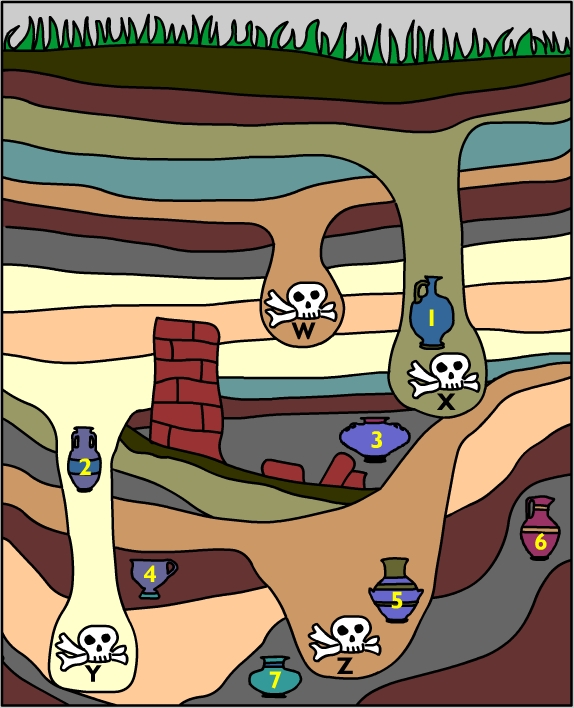 |
Part 2: StratigraphyBecause types of earth are recognizable by variation in textures, colors, and inclusions, archaeologists are able to recognize different layers (or strata) in an excavation. The term "stratigraphy" refers both to the relative order and position of the strata and to their use as a means of interpreting the history of the site. As in geology, the important principle is the Law of Superposition: later strata will overlie those deposited earlier. Note however that both natural and human actions can alter an ideal stratigraphic model. This illustration represents a stratigraphic profile (i.e. you are looking at a vertical cut into the earth) in which you can see four burials, seven ceramic artifacts, and the remains of a building. Using stratigraphy, please answer the questions below. Remember that the terms "earlier" and "older" mean further in the past, and younger and later are closer to the present |
 |
|
3. Is it possible to determine which ceramic vessel is later: 4, 5, or 6? If so, which one? 4. Is it possible to determine which vessel is earlier: 1, 2, 6, or 7? If so, which one? 5. In what order were the burials interred, from oldest to youngest? 6. Which is older, burial Y or vessel 3? 7. Was the wall built before or after burial Y was interred? 8. From the information given here, is it possible to determine the absolute dates of the burials? |